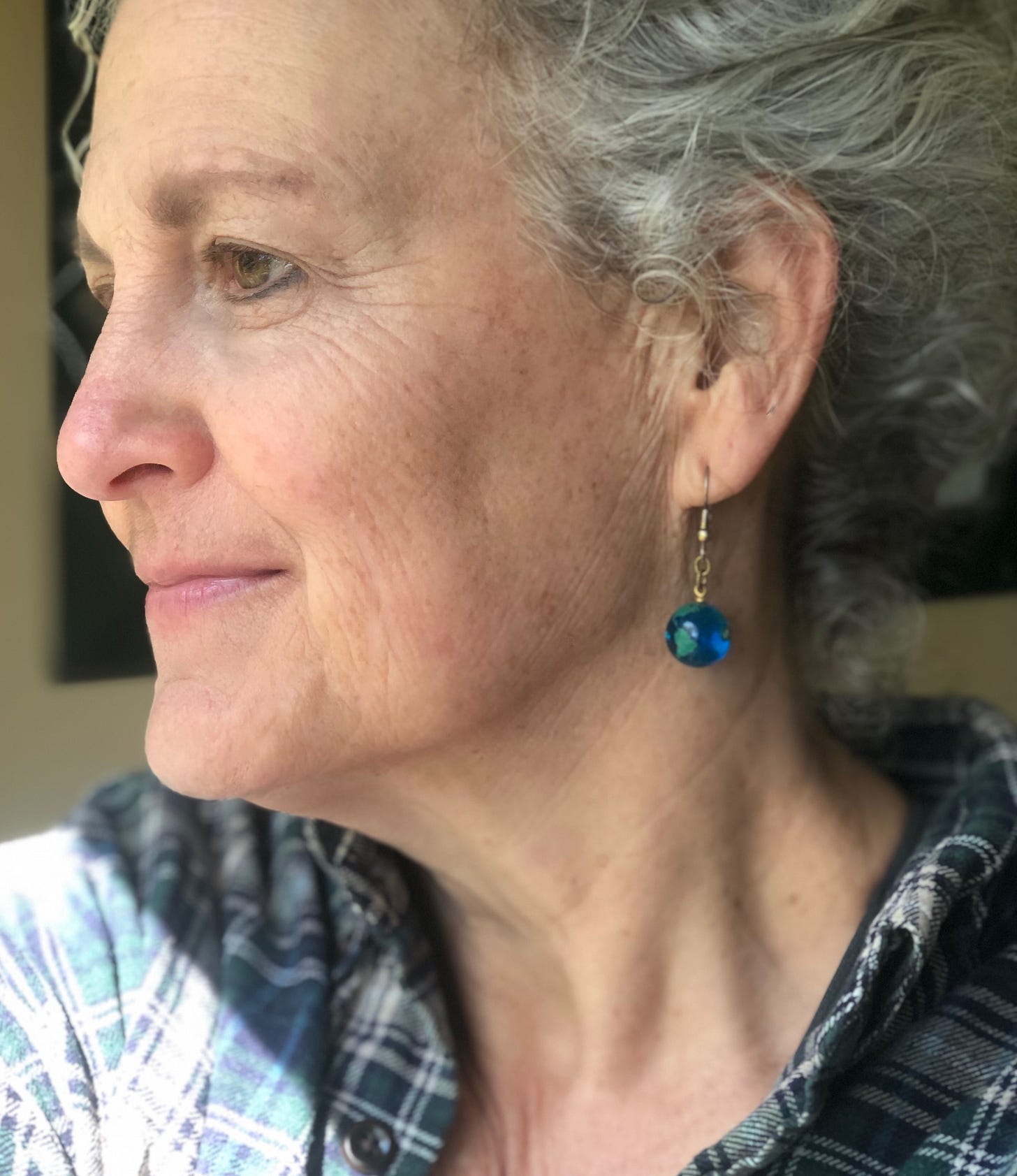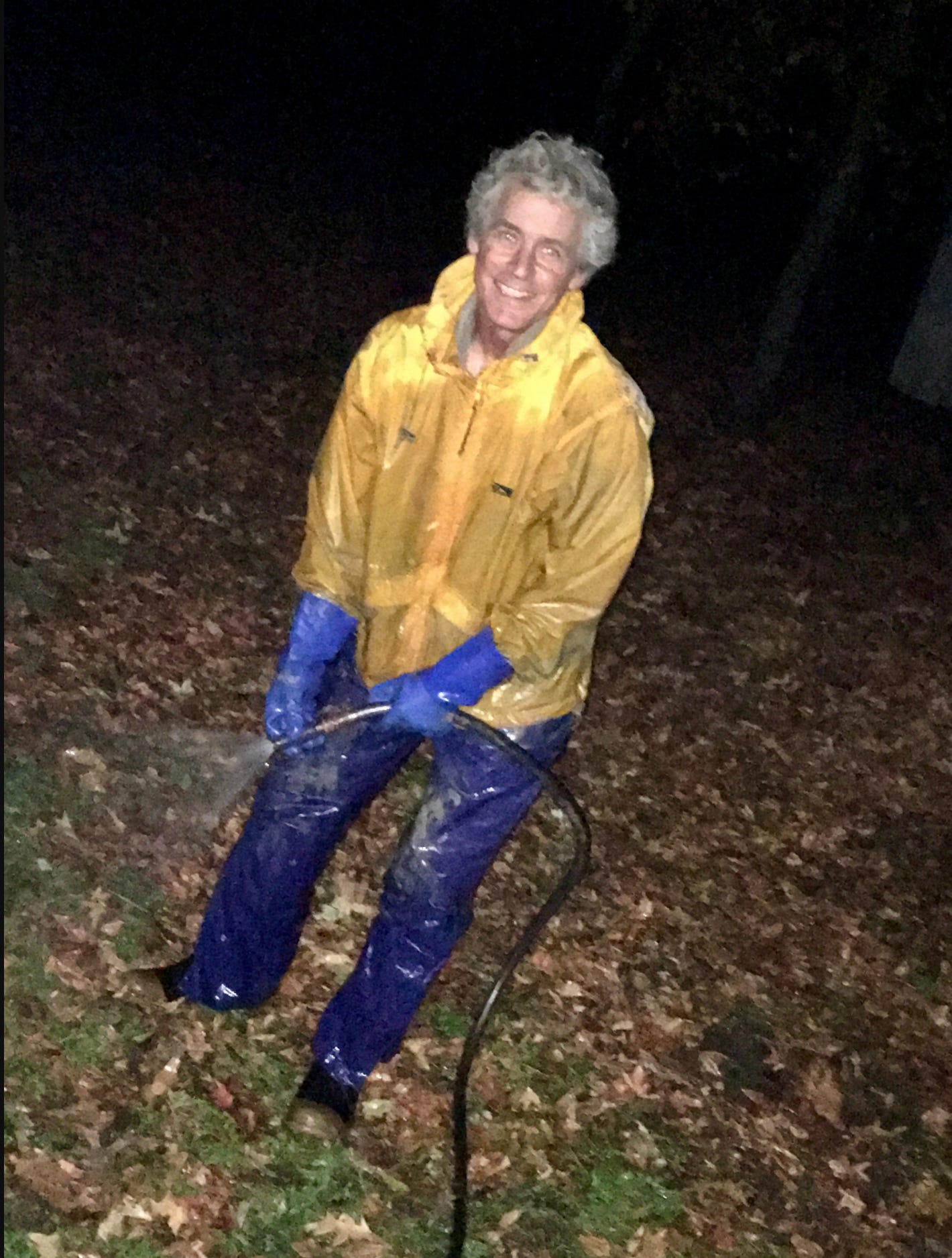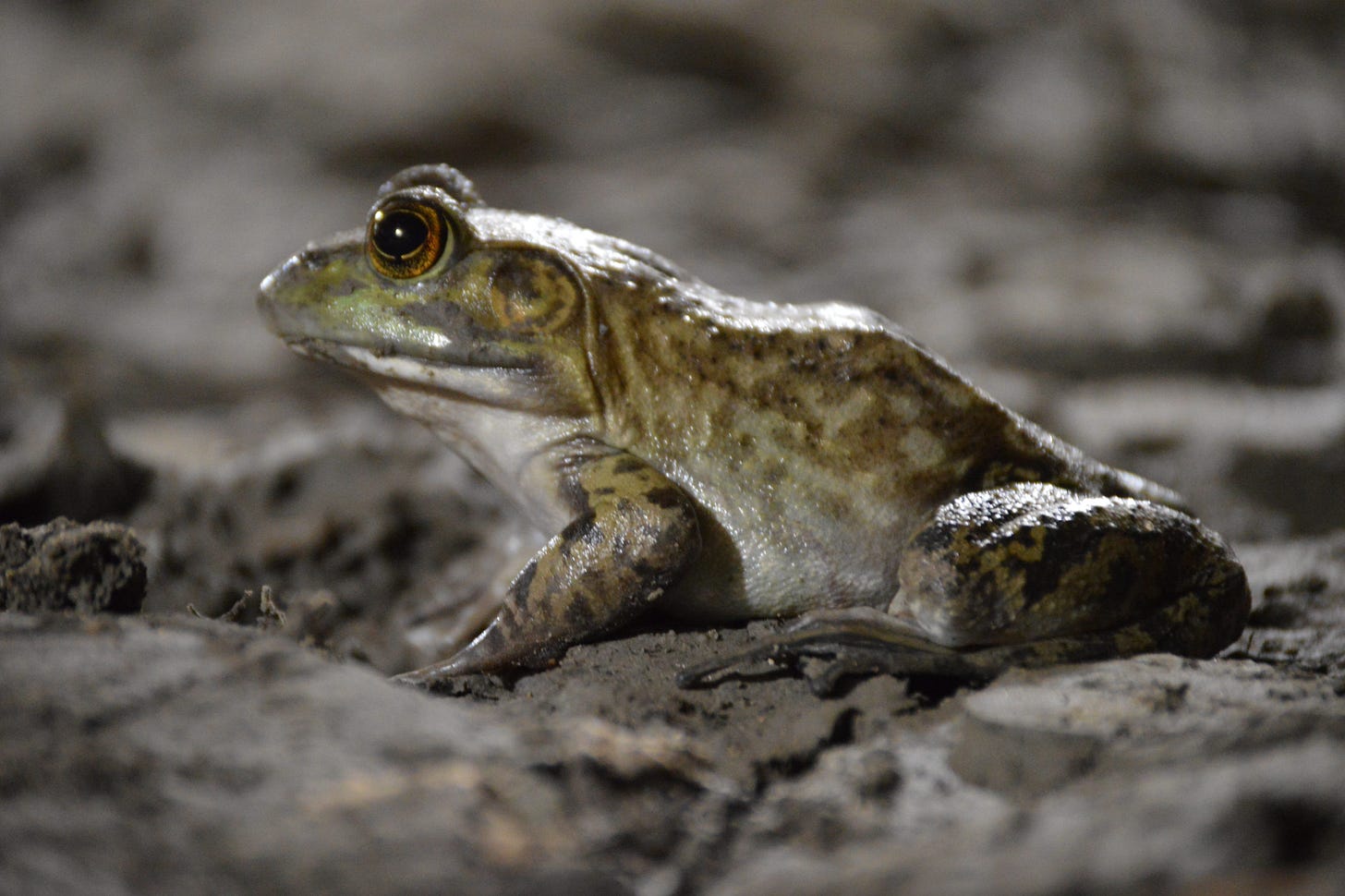Unrelenting return
What a frog can teach us about who we are.
I slip the metal hooks through the holes that were were added to my earlobes when I was barely a teenager. The blue glass orbs with painted green continents dangle happily. I’ve had these earrings for far fewer years than I’ve had the piercings but still for longer than I can remember, and it’s a rare Earth Day that I manage to think of them in time to wear them as a symbol of solidarity for Big Blue. I love that they’re made of materials that one day, when I’m past the point of all remembering, will do no further harm. I can’t say that about a lot of things in my life, so I give in to a moment of pride for that modest win.

Catalyzed by a well blowout that spewed 35 million gallons oil into the waters off the coast of Santa Barbara, CA, the first Earth Day celebration in 1970 engaged 20 million Americans. It mobilized sweeping political and behavioral changes. I don’t know if we will ever again achieve the kind of cross-sector, bipartisan support that materialized for that event, but I take heart in knowing that we found our way there once.
In my world, spring sparks a fresh, intoxicating love affair with our planet. Plants and cuttings that have suffered through an indoor winter are gradually released to the open air. Empty pots are rejuvenated, landscape beds renewed. The community garden and farmers market, with their seasonal relaunching, require hours of volunteer support. My body and mind remember how it feels to move this way, to push this way, and seem to regret that I ever allowed them to stop.
The transformation comes not from force, but from the unrelenting return of life and truth.
It’s a lively time, and I’m thrilled to end so many days with dirt under my fingernails again. But dang if sometimes I just can’t keep all the plates spinning! I hope you’ll appreciate the chance to read or reread a piece I shared when Chicken Scratch was barely a year old. It is a timeless tale that features a very special bullfrog.
On being green
Some summers ago, my industrious other half launched a crawl space renovation that had him under our house for hours, on his hands and knees, in the slick, heavy clay that is a hallmark of the soil in this part of the world. Though I am blessed with his good attitude, to say it was grueling work would not be an overstatement.
A bright point was the predictable presence of a bullfrog. Sometimes, she appeared to be watching from across the muck, like a golf spectator. Other times, she splooped into a soggy puddle, vanished for a day or three, then reappeared just like that. On occasion, I heard a voice drifting up through the drain pipes into the house and understood that my husband was having a little chat with his amphibious companion.
…we were proud of ourselves for releasing her from bondage.
By late fall, drainage systems were working to de-swampify (a highly technical term) the space. Water that once ponded across the entire area was now shunted off into newly dug ditches wrapping the perimeter. The mission was suspended as winter moved in, but just ahead of a freeze, the frog was captured —a remarkable feat unto itself given how nimble they are—and taken down the road to a marshy site where she could hibernate underwater.
Long before this project began, access to the crawl space was deliberately restricted, to keep our cats and other varmints out. We have no idea how our bulgy-eyed friend gained entrée in the first place, but we were proud of ourselves for releasing her from bondage.
Had she made such a house call on the other side of the country from us, or in many other places around the globe, this frog would likely not have been greeted so warmly. And, that is a story that needs telling. I promise to get back to Kermit’s cousin shortly, but it’s important to situate her in the context of a larger environmental picture.
The American bullfrog is considered a highly invasive species in the western United States, Europe, South America and Asia. As with many creatures that now proliferate outside of their native ranges, bullfrogs were introduced to these areas accidentally-on-purpose. Some slipped in with fish stocking operations, some were discharged as a game species. (Frog legs anyone?) Over the years, they’ve been released by the unknowing and escaped from the unsuspecting. Now that they’re free, they’re going bonkers.
A single female bullfrog can lay up to 20,000 eggs at a time. Predators native to the eastern U.S.—large-mouth bass, blue heron, snapping turtles—consume eggs, tadpoles, and adult frogs. Lacking this competition in other places, bullfrogs devastate their newfound habitats. They will eat anything they can fit in their mouths including birds, bats, reptiles, fish, insects, rodents, even each other. Unfortunately, nothing keeps their populations in check. On top of their reproductive vigor and voracious appetites, they carry a fungus to which they are mostly immune but which further decimates other amphibians.

Twenty years ago, in National Geographic, John Roach reported on the unstoppable surge in non-native bullfrogs around the world. More recently, Ted Williams blogged for the Nature Conservancy about the bullfrog plague, as well as ongoing efforts to control them. Neither writer offered evidence of any programs that are really getting a leg up on the frogs. There are just too many of them.
…what determines belonging, and who decides what does and does not?
Counting aquatic and terrestrial plants, mammals, arthropods, amphibians and other organisms, the American bullfrog, known scientifically as Lithobates catesbeianus, is one of about 1500 total species categorized as invasive, foreign, non-native, or alien. As I thought about these labels and how many other things are stuck with them, I was struck by how similar they are to terms used to describe humans who move from one place to another. I couldn’t help noticing the combative and nationalistic tone of the words and of those associated with their management. Verbs like “eradicate,” “eliminate,” “kill,” and “euthanize” show up with frequency in articles about forms of life that have moved beyond their original locations.
NOAA defines invasive species as animals or plants from another region of the world that don't belong in their new environment. But what determines belonging, and who decides what does and does not? Has the line between the new environment and the original one always existed? Do we understand enough about how species migrate, breed, hybridize, and evolve across time to make such determinations? Most importantly, and especially because humans are directly or indirectly to blame for almost every redistribution, is there room for compassion in how we manage them?

It didn’t take long to discover others who have taken questions like mine to the next level, identifying biases and inconsistencies within the field of invasion biology and calling to attention the need for a more nuanced lens. Rather than searching for ways to rid our environment of non-native species, Nicholas Reo, who is an enrolled member of the Sault Ste. Marie Tribe of Chippewa Indians and an Assistant Professor of Environmental and Native American Studies at Dartmouth College, says, “It is our responsibility to figure out how they are useful.”
We decided she needed a she-shed, a place to get a break from the males…
When I set out to tell the tale of a resident amphibian, it was not my intention to jump into a much broader and more provocative exploration of our anthropocentric tendencies, but if I look at where I’ve landed from the frog’s perspective, it makes perfect sense. Indigenous principles teach us to see ourselves in kinship with all other beings. Frogs are members of our planetary family and, therefore, are deserving of the possibility of shifted thinking.
Our green playmate kept us company that whole summer, but once she’d been rehomed we didn’t think much more about her. We certainly never expected that when we opened up the crawl space the following spring we’d find another bullfrog hanging out in the damp darkness, looking ever so familiar.
We’ll never know for sure if it was the same one, but it’s fun to believe she liked us so much that she returned. After all, bullfrogs can travel over a mile in damp environments.
We removed her a second time, all the while speculating about her solitary existence in that dank habitat. We decided she needed a she-shed, a place to get a break from the males whose noisy, nightly advertisement calls we hear undulating from the marshlands that surround us.
It’s been seven years since we first made her acquaintance. We’ve not seen her again. But this winter, when the house was very quiet, we often heard soft, raspy sounds coming from somewhere just below the floor.
~Elizabeth
This story was first published in 2023 (dates were edited here as needed), and we’ve never had a winter without the sound of a bullfrog emanating from below us. I’ve come to count on it, just like I’ve come to count on you! Now’s when the Chicken Scratch team can help me keep the buzz going. If you liked today’s piece, please take a moment to click the heart, jump into the comments, or restack the story. That’s how Substack knows there’s good stuff going on here, which helps me reach new readers, which is part of why I’m here. And, while I want my essays to be accessible to everyone, if you’re feeling the tug of connection, have the means, and the timing feels right, a paid subscription or one-time donation will help more than you might imagine.
Thanks for stopping by. I hope we’'ll see each other again soon! 🐸






What a beautiful love story.... Betsy.... When I read or listen to your writings, I always am led to think of a contemporary comparison... I was reading right along when I came upon your shared words like eradicate and decimate and eliminate...Hmmmm... Sadly, these words have been used toward one another too many times...... I believe there's a better way to find how we too, can "hop" through life together...
That was a delightful learning experience, thank you Elizabeth! My Grandmother Pearl just loved her Frog's Legs and we traveled far and wide in search of them. Who knew we were doing the world a favor? Spent hours as a child dangling wiggling worms in front of stoic (until they weren't) frog noses.
Always a pleasure to know you (and Jim) are looking out for the creatures of the planet. Happy Earth Day, belated. J